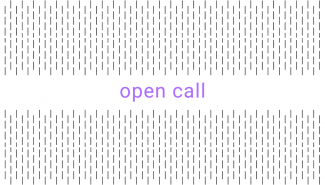
Writing out an open call is a proven method of distributing the funds. But what are the do's and don’ts? What could we learn from the posts with a proven track record in writing out open calls, or their mistakes? What are the pitfalls, the motivations, and how to make an open call into a successful one? These and other questions were the topic of last month’s webinar Open Calls, part of a series of webinars organised by DutchCulture in cooperation with partners as a follow up to the Embassy Culture Days 2021.
Communication strategy
A possible communication strategy could work threefold:
- Distribute the open call through the embassy’s own newsletter. This solidifies the existing networks of the embassy and gives a stable routine to the process of applications. There are even some institutions that steadily apply to every new round of the open call the embassy in Brussels sends out.
- Distribute it through social media to widen the scope, and to attract new applications. LinkedIn and Instagram work best for some posts, even though Facebook and Twitter might help to attract a new audience of possible applicants. It especially helps to have good visuals.
- Perhaps most important: distribute it through your personal network. This way, you can interest your preferred partners to apply and motivate them to renew a collaboration. And to widen the scope: ask your network to forward it to their network.
Use your network
It is specifically on the last point that writing out an open call can work best: creating or expanding the scope of the embassy’s network. It is through writing out an open call and receiving responses that you get a new look at the things that are happening in your country’s cultural sector. There is the aspect of surprise to open calls: the responses might make you discover new projects that are not quite visible to the cultural scene yet. Writing out an open call is the perfect opportunity to get the embassy in the know.
Accessibility
Not all posts are in the luxury position of sending out an open call and simply waiting for the replies to roll into their mailbox. In these cases, we can look upon the open call as a coaching device, a document towards which you can direct makers who aspire to bring their practice to the next level. By sending out an open call, you can start the process of coaching applicants into achieving the level of quality that such a production needs. With that in mind, it is important to realise that the allotment of only a small financial contribution to a project can work as a stamp of approval to other funds and supporting organisations.



